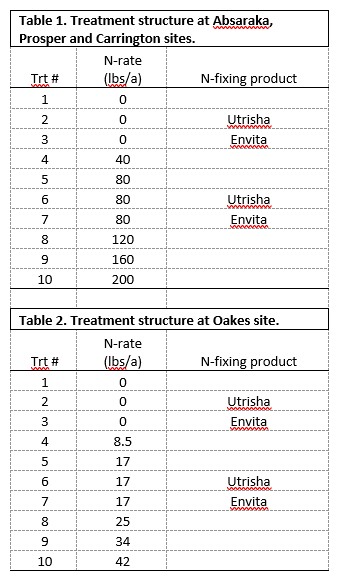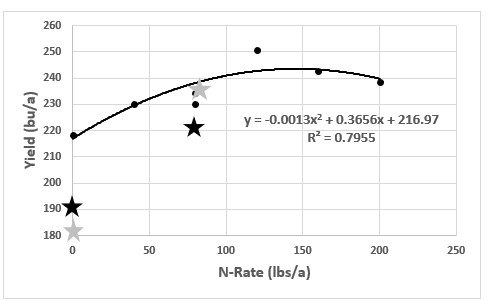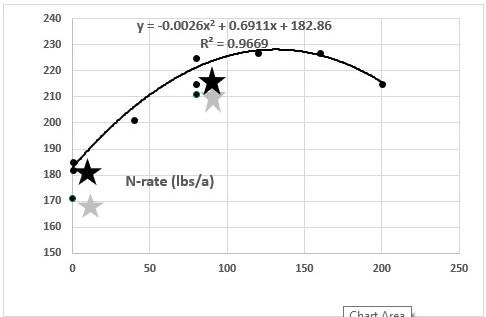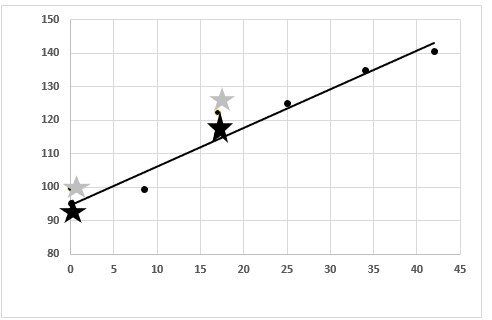Introduction
Lately, biological-based products have been marketed to enhance crop production. One class of products is as essentially seed inoculants that claims to either infect the seed, which enables them to perform N-fixation functions similar to Rhizobia in legumes, or they inhabit the immediate soil outside the root (the rhizosphere) and use plant-root exudates as food-stuffs, enabling the N-fixing organisms to fix N from the air. There is much more marketing information available to corn growers on these products than there is real unbiased data; particularly data from North Dakota and the immediate region.
There is evidence that N-fixing organisms are already present in our soils. Part of the long-term no-till N credit used as part of North Dakota N fertilizer recommendations for spring wheat/durum, sunflower and corn is likely the result of asymbiotic N-fixers whose activity is maximized by preservation of their soil ‘homes’ through minimal disturbance and presence of a greater and more varied food supply than in conventional-till soils (Franzen, Inglett and Gasch 2019).
Envita™ by Azotic North America and Utrisha™ by Corteva Agriscience are nitrogen-fixing products sold in our region. The most repeated N contribution of marketing literature of the two products is that it would reduce the rate of N required to grow the crop by at least 40 pounds N/acre. If this were accurate, it would be a savings of $20-$50 per acre (less the cost of the products) to a corn grower. In addition to possible corn grower cost savings, there is increasing pressure from the public and government to reduce fertilizer rates of all types due to environmental concerns, including greenhouse gas emissions during manufacture and after application.
A study funded in part by the North Dakota Corn Utilization Council, was conducted to evaluate the ability of these two products to supplement some or all of the N required to grow a corn crop in North Dakota.
Methods and procedure
There were four research sites in North Dakota with similar protocols: one near Carrington, one at Oakes, one at Absaraka and one at Prosper.
Each site was on soil with relatively low residual soil nitrate values. The Absaraka site was managed through one-pass seeding (no-till), while the other three sites were conventionally tilled using a chisel plow at least once in the fall to at least 8-inch depth, followed by a spring field cultivation prior to planting.
Treatments at Carrington, Absaraka and Prosper were the same (Table 1), but due to an error in calculation, the nitrogen rates applied were four times lower at Oakes (Table 2). The Oakes site is also on a sandier soil and received 11.5 inches of irrigation water, resulting in visible signs of nitrogen deficiency throughout the trial.
Table 1. Treatment structure at Absaraka, Prosper and Carrington sites.
Table 2. Treatment structure at Oakes site.
N treatments were applied at or before planting using SuperU™ urea (Koch Industries). All experimental units were planted with an in-furrow application of 2.5 gallon/acre 7-23-5. The treatments with Envita were made using 7-23-5 (low salt) as a carrier and applied to the appropriate treatment areas with a 5-gallon total solution in-furrow. The starter dilutions were made using distilled water or water straight from a well without chlorination. The Envita solution was made with the dilutions specified on the label with non-chlorinated water. Harvest was completed by hand at Absaraka and with a plot combine at the other three locations.
Results
Corn yields responded to nitrogen rates at all the sites. At Absaraka, corn yield increased with N up to a treatment of 120 lbs N/acre (Figure 1); at Prosper, up to 200 lbs N/acre (Figure 2); at Carrington up to 80 lbs N (Figure 3) and at Oakes up to 42 lbs N/acre, which was the highest rate applied there (Figure 4). The nitrogen yield curve was linear at Oakes, because of the low rates applied. Greater N rates at Oakes would have resulted in greater yield. The Utrisha and Envita additives did not result in greater yield at either the 0 or the 80 lbs/acre N level at any of the three locations using full rates or the 0 and 17 lbs/ acre rates at Oakes (Figures 1 through 4).
Figure 1. Absaraka response of corn to N treatment and N rate with additives. Gray stars indicate treatments (0 and 80 lbs N/acre) with Utrisha post-applied V6. Black stars indicate treatments (0 and 80 lbs N/acre) with Envita in furrow at planting.
Figure 2. Prosper response of corn to N treatment and N rate with additives. Gray stars indicate treatments (0 and 80 lbs N/acre) with Utrisha post-applied V6. Black stars indicate treatments (0 and 80 lbs N/acre) with Envita in furrow at planting.
Figure 3. Carrington response of corn to N treatment and N rate with additives. Gray stars indicate treatments (0 and 17 lbs N/acre) with Utrisha post-applied V6. Black stars indicate treatments (0 and 17 lbs N/acre) with Envita in furrow at planting.
Figure 4. Oakes response of corn to N treatment and N rate with additives. Gray stars indicate treatments (0 and 17 lbs N/acre) with Utrisha post-applied V6. Black stars indicate treatments (0 and 17 lbs N/acre) with Envita in furrow at planting.
Summary
Four sites in eastern North Dakota were subjected to an N-rate trial, with the N-fixing bacteria containing products Envita and Utrisha applied per their respective labels in-furrow and foliar at V6. The results indicate that there was a positive response to N at all locations; however, neither Envita nor Utrisha contributed greater yield at either of the N-rates or locations where they were applied. The application of these nitrogen-fixing bacteria outside of their native habitat and in crops other than their natural hosts is a somewhat novel concept. The scope of this study did not allow testing whether colonization had happened successfully. There is likely more to learn about the precise conditions under which these organisms can thrive and establish a symbiotic relationship with crops beyond their original hosts.
Literature
Franzen, D.W., P. Inglett, and C.K. Gasch. 2019. Asymbiotic nitrogen fixation is greater in soils under long-term no-till versus conventional tillage. Soil Science Society of America Journal 83:1148-1152.
Doi:10.2136/sssaj2019.03.0062.





